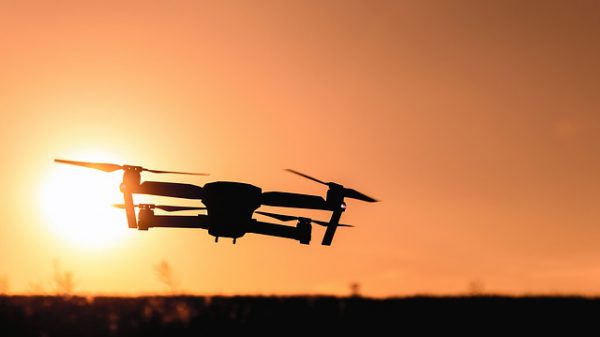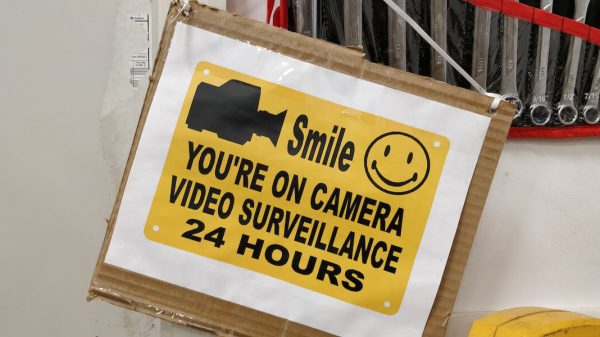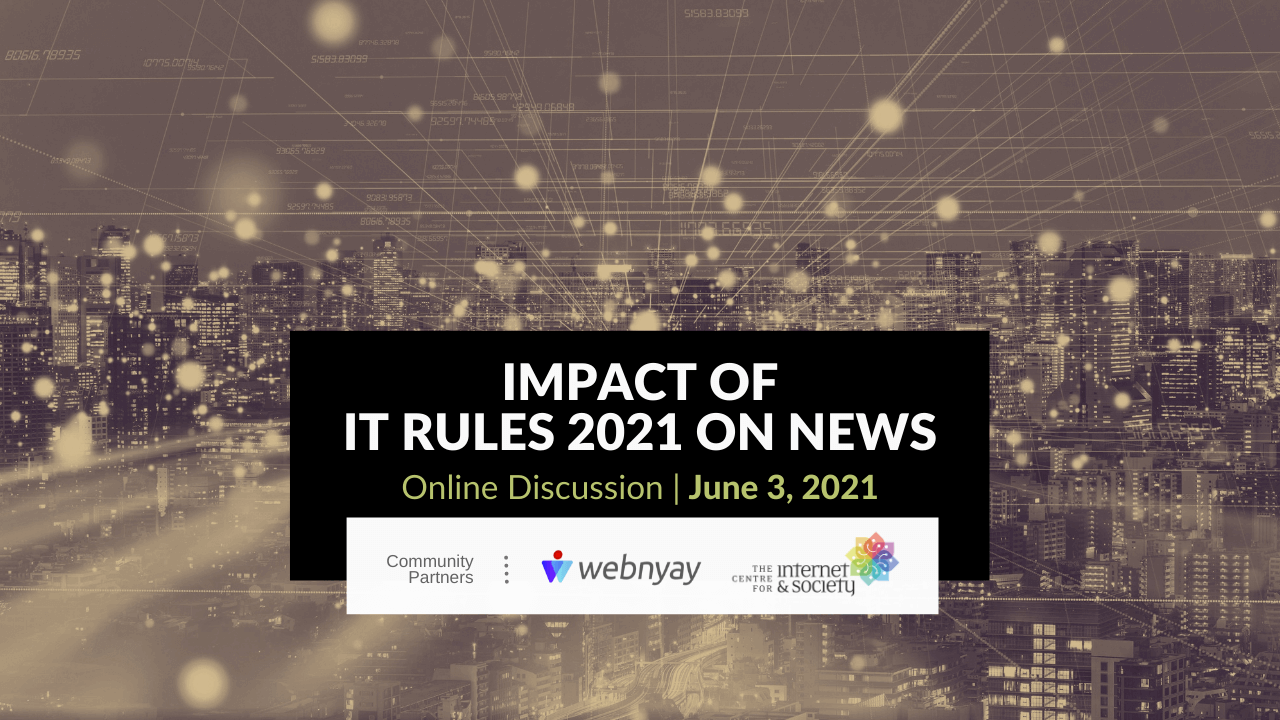Key takeaways
- While the framework of the rules has created two categories of regulations – one for intermediaries and one for digital media organizations, news aggregators most often straddle both of these categories of organizations
- To avoid conflict in the roles of intermediaries, the first thing that comes to mind is to carve aggregators out of the scope of digital news and the entire code of conduct, because otherwise they will be both intermediaries and follow the provisions applicable to aggregators at the same time.
- In determining how algorithm plays out in this scenario, courts would have to see the modicum of control the aggregator has over the algorithm, whether the algorithm plays a significant role and aggregates, curates and helps in the presentation of data
- As an aggregator if you choose, curate, and promote certain content then you can’t escape liability of a publisher, by taking the stand that you are an aggregator.
- OTT platforms do not qualify as news aggregators in carrying the news content, playing the role of pure intermediary, because there they’re not playing a significant role in terms of curation of the content that is coming online
In a panel discussion held by MediaNama on the impact of IT Rules, 2021 experts shared their views on how the IT Rules, 2021 will impact news in India, and what it means for digital media organisations. The panelists included Abhishek Malhotra (TMT Law), Gurshabad Grover (Centre for Internet and Society), Mathew Chacko (Spice Route Legal) and Udbhav Tiwari (Mozilla).
Webnyay and Centre for Internet & Society were our community partners and the discussion was supported by Google. All quotes have been edited for clarity and brevity.
Conflicting definitions of aggregators and intermediaries
Would there be a conflict between the roles of intermediaries and aggregators with the new definition of aggregators?
Hinting at such a possibility, Tiwari said “in the new legal framework there are essentially two categories of regulations that have been created — one for intermediaries and one for digital media organizations. But news aggregators more often than not straddle both of these categories of organizations, a) because they definitely perform the functions of intermediaries, in that they take content that it do not vet and maybe make it available for users to consume; and b) because under the rules, certain obligations applicable to them imply a certain amount of editorial control over that content or otherwise, don’t necessarily apply to intermediaries.”
If there is a situation where it’s perceived that an intermediary is an aggregator, how should they know which Code of Conduct is supposed to be for them?
Malhotra said that the qualifier for the intermediary is the function and not the entity. So, therefore in the event that one is told that a particular activity of theirs could be an intermediary function or could be an aggregator function, they will have to apply the principles of 79(2) and the principles of the definition of news aggregator to come to a conclusion as to whether a particular function qualifies as an intermediary function, or it qualifies as an aggregator function. This distinction will have to be made on a case to case basis.”
Malhotra explains that the distinguishing feature is not just the significant role that the entity performs in determining the content, but also in curating the content. “Now, unfortunately, our law nowhere has a definition of curation. What is the level of control or interference that I can exercise with the program that is coming onto my platform for me to be qualifying the definition of having curated it.”
Chacko sees intermediaries as the all encompassing subject of the IT rule. “So, very legalistically, if you determine the content and play a significant role in that, then you are an aggregator. As long as you also play curation and presentation roles, if you’re an aggregator, then by the definition of that publisher of news, you’re definitely a publisher as well. So intermediary responsibilities flow to everyone, aggregator responsibilities flow to some and thereafter, you’re also a publisher of news and current events.”
How to improve this definition of aggregators to narrow it down and to separate them from intermediaries?
Tiwari’s contention is that for the purposes or the objectives, no matter what they are behind the rules themselves, treating aggregators as intermediaries should be fine. “The first thing that comes to mind is to carve aggregators out of the scope of digital news and the entire code of conduct, because it’s quite hard to imagine how they can both be intermediaries and follow the provisions applicable to aggregators at the same time,” said Tiwari. Alternatively if they don’t want to do that then at a baseline minimum level of clarity that the rules should provide, could be further explanation on when an intermediary is also a news aggregator, then whether they should be treated as news aggregator or as intermediaries.
Chacko on the other hand said “I actually think that the definition of a news aggregator is one of the few things that whoever adopted this got right. If you look at section 2(o) which defines ‘news aggregators’, it says 1) you need to play a significant role in determining the content. So that itself is a qualifier. The second thing is 2) that you need to aggregate, curate and you also need to present.” What is without a doubt is that all news aggregators, if you come under that threshold, are intermediaries. And that all news aggregators are also those publishers of online news and current affairs.”
Would someone who filters out fake news be a news aggregator? In my mind that is not the intent of the definition Chacko said. “Of course we will have to wait for either rules or a decision of the courts to flesh out what a news aggregator is,” he added.
If the content display is just Algorithmic and there is no human intervention, would it still be deemed a news aggregator?
Chacko reasoned that courts will have to go one step beyond and ask, if the algorithm plays a significant role and aggregates, curates and helps in the presentation of data? And secondly, whether the aggregator has control over the algorithm? He said that in such cases, merely designing the algorithm, in a certain way will not absolve the entity of its liability as an aggregator. “However, just adopting somebody else’s algorithm, and plugging the algorithm owned by somebody else may let the entity get away from additional liabilities that the new definition of a news aggregator brings about,” he added.
“In my opinion, news aggregators are the worst off because of the rules, because in previous iteration of the rules one could understand some of their functions as qualifying as intermediaries and therefore their immunity from liability under 79. But these new rules seem to be structured as creating two mutually exclusive categories, one is intermediaries and sub-categories thereof and the other being publishers of digital content. News aggregators are falling in both the brackets because of the function that they perform, which qualifies as an intermediary function. But they’re specifically defined under part 3 and explicitly included under the meaning of a publisher.” — Gurshabad Grover
Citing the reason that a significant role as a qualifier is largely meaningless just because of the fact that it is not making any distinction between some human editorial function or an Algorithmic function, Grover argued that “we are in no position to say how the significant role will be determined and therefore this weakness will only contribute to the provision being used against entities which are supposed to have immunity from liability.”
How does the law wrestle with the fact that these are complex algorithmic systems? For example, in the Instagram newsfeed the algorithm behind stories, video recommendations etc. all look different depending on whether you access from mobile or laptop low data version etc?
Grover was of the view that this was again an example of why the News aggregator definition is perhaps not the best way to look at the function that we are describing here. He explained “Now, are these newsfeed playing a significant role in determining what we see in terms of news and contents affairs, absolutely yes. And the algorithms vary on what device users are accessing it from and what network they are accessing it from. In the first part of the regulation which relates to intermediaries, it does not say anything about algorithms like news feeds.
The threshold to determine news aggregators and intermediaries
Many intermediaries put in place mechanisms to filter out or discredit fake news
“With regard to the roles news aggregators play, the rules really don’t envisage aggregators as intermediary entities, they definitely place aggregators, broadly at the same threshold as they place publishers of news and Current Affairs content,” said Tiwari.
Grover said “that the only qualification seemed to be a significant role and then determining the news. Now when it is qualifying as both, I think what should be taking precedence is the fact that the source of these rules is the intermediary liability provision. When we’re discussing the threshold, I would just like us to remember that if you look at the definition of news aggregators, it is so broad that lots of the news aggregators are actually intermediaries and that’s the protection and the 79 active defence is what they ideally should rely on.
Chacko asserted that it would probably depend on how significant the role is, in choosing what content comes up first. “So a certain particular search engine, that uses an algorithm to decide what kind of content comes up and you can pay some money to get that content up there, ought to be liable for infringement etc, and responsible around that content.” He further explains “Eventually what we’re going to come down to is, if you either humanly or through choosing and picking and applying an algorithm, or by taking money are promoting certain kinds of contents, then you are not an intermediary. You’re making money out of it, you’re playing an active role, and therefore, then your safe harbor provisions go away.”
Can the liability of an aggregator be the same as that of a publisher, because it seems to be the same for both.
Chacko said that as an aggregator if you choose, curate, promote certain content then you can’t escape liability of a publisher, by taking the stand that you are an aggregator. “I think there’s a good reason to say that if you’re choosing and arranging all the news that I am reading, you’re not an aggregator then you’re actually a publisher.”
Categorization as news aggregators and publishers
OTT PLATFORMS
Should OTT platforms such as Zee5 and Hotstar, both carrying news feeds or Hotstar live streams, sports etc. be construed as a news channel? How will these platforms be impacted by these guidelines around news aggregators?
Malhotra’s opinion was that news and sports should be treated differently. He said “I’m going back to the intent expressed both from the point of view of the uplinking and downlinking guidelines, on the basis of which channels are allowed to uplink and downlink signals into India, as also then subsequently regulation issued by the TRAI. They make a very clear distinction at one level between news and non news channels, and sports falls in the domain of non news.”
Would a website like Cricinfo having live score cards and live commentary, and news related to cricket get covered by these guidelines?
Malhotra said it shouldn’t.
“When it comes to the live news feed on these OTT platforms, to my mind, there are two questions here.The first is whether that relay or making available of the live news feed off those channels on an OTT platform converts the OTT platforms into a news aggregator. And therefore, there are not only issues under the IT regulations, but also the 26% threshold that is required to be adhered to, as per the foreign policy guidelines. The other aspect is whether by virtue of the fact that this content the news content is being carried on the OTT platform, does that news channel have to also adhere to the code of ethics to the extent that they relate to age classification and the classification of the content that is set out in the annexure to these regulations. The answer, at least to the limited extent that I can give, the content and the age classification that is applicable to online curated content cannot extend to news content, not only because a) they have exclusive definitions under rule 2 of IT guidelines, but also because of the fact that b) unlike entertainment content of films, which can be viewed in advance, you can’t possibly have a viewing of a news content in its totality, in order for it to be given that kind of a content classification.” — Abhishek Malhotra
As to whether or not OTT platforms qualify as news aggregators, I think that they are in carrying the news content, playing the role of pure intermediary, because there they’re not deciding, or they’re not playing a significant role in terms of curation of the content that is coming online, continued Malhotra. It is the news content, as is, that is coming on their platform and therefore to that extent it will be an intermediary.
One of the tragedies of these regulations is that there was no public consultation, at least on the news and current affairs and the OTT streaming part of it.
Tiwari agreed that the definition of aggregators definitely needs to be fleshed out. “Most of the online platform that I spend a lot of time on very clearly fall under that definition, because if you notice it doesn’t say anything about you primarily having to deal with news or current affairs content but merely says as long as you do those things with regards to news and current affairs content, then you can be called News aggregator. If I were an entity filing an FIR or a complaint, who wanted to interpret the law in a particular way, I think there is an incredible amount of leeway to make the news aggregator definition infinitely more complicated than we would all like it to be.”
Grover explained that going by the rules, for the platforms that are licensing content, it is clear that they should be qualified like a curated content platform or like a publisher. “I think that the IT Act does not envision this sort of classification, categorization and making onerous obligations on the subcategories of intermediaries/non-intermediary. If you are of the view that news aggregators are non-intermediaries, then they have no place to be regulated under the current IT Act. And if you are of the view that they are intermediaries, then the scope of obligations that are currently present on them through the rules exceed whatever is envisioned by IT Act. But the 2021 rules are also strange as they are trying to regulate entities as a whole,” he argued.
Have you seen such a grievance redressal mechanism anywhere else in any other industry, where the channel for opening or filing a grievance is so wide? (unanswered)
Indian Kanoon
Are you a news aggregator or a news publisher under these rules? And are you planning to send something to the ministry?
Sinha from the Indian Kanoon responded saying that he has no clue. “I mean, I mean we are already having so many issues with the legal front, especially right to the formatting and everything, that this is a new thing. We don’t host any news, but we host legal content and I mean we are aggregating legal content but it is not news. I think my understanding of the legal situation is that I would. At this point I would just claim that section 79 doesn’t apply to me,” said Sinha.
Tiwari responded no. He explained that the website posted judgments as they are, as and when they become available rather than doing any form of analysis on them. “So I think if a website that nearly directly only publishes, say, press releases that people send out, without modifying or changing anything exactly as they receive them, would be a news aggregator. I find it quite difficult to imagine Indian Kanoon being considered to be an aggregator, because they do aggregate content, but I don’t think it’s neither news nor current affairs content, but judgments.”
Seshu responded “India Kanoon, doesn’t seem to be processing content in any way apart from just putting it out. So, it may be an aggregator, but it’s not a news aggregator, I don’t see it as a news aggregator.” As for platforms like Manupatra, she said that since they have reworked and repackaged the basic judgment, then they are in some way processing the content and could be considered as news aggregators under the rules.
Google search engine
They’ve said that Google search is not a social media intermediary. But is the first page of Google where news content is shown as aggregated? And does that make Google search engine a news aggregator?
Tiwari answered that even if it’s accepted that as a search engine Google search is not an aggregator, if one wanted some content to be taken down, then who should be contacted? “At a minimum that’s the demand that we can certainly imagine the government making because I think the intention behind including news aggregators under the purview of these rules was very much that. It was to make sure that it’s not just the publishers of content, but also the entities that bring all that content together that are made accountable,” he explained.
If they are news aggregators, then the FDI norms would apply to them.
Tiwari said that ‘FDI law in India is enforced by lack of enforcement.’ He said “it’s a law that exists in a certain way or format, but it’s only when the Enforcement Directorate launches an investigation against you, then it really becomes a thing. This is definitely one of those cases where there are clearly multiple opinions on what can and cannot happen.”
News entities including aggregators, have been asked to also send across their shareholding structure.
Tiwari was of the opinion that in this case, only those platforms will be sending those structures across that had received such a demand from the authorities. That’s the picture in general of our foreign direct investment in India, especially for sectors that are enforced. He said “So, I think the fact that it hasn’t happened so far, shows that the lack of clarity is very much the desired outcome in the regulatory scheme of things,” Tiwari implied that through such actions, people are made to be wary, and there shouldn’t be too much investment and this is an alternative form of putting pressure on these entities.
Delicious, Instapaper, Pocket
What about bookmarking services, like Delicious, Instapaper or Mozilla acquired Pocket. Do they get impacted?
Tiwari responded that any webpage or anything on the internet that has a URL, can include news content as well. But similar to the first page of bookmarking services, you can just also bookmark things, and current affairs content, but the vast majority of content that is bookmarked on these platforms by users is not news and current affairs.
Grover argued “for all of these entities that may be confused about whether they qualify as aggregators international or domestic, I would say that the nature of 79 should be taking precedence over how one should act on it. So therefore section 79 immunity should be used as an active defense. What happens if you don’t meet the conditions of 79 that your protection from liability for third party content is not applicable? So even that has to be dealt with on a case-to-case basis.
When news aggregators aggregate, or when news publishers aggregate wire services, are they aggregators or are they publishers?
Tiwari said that there are actually some ways in which publishers utilize news feeds and eventually aggregate them, and also disclaim liability for their content because they haven’t really published them. “So, I think that’s definitely something that the law certainly hasn’t envisaged, and I’m not very sure whether they want to cover them in that format. I would say the immediate answer to me is that they’re certainly publishers, so many other parts of the law apply to them anyway.” He added that the question as to whether they are specifically news aggregators or not, is an interesting one yet to be resolved.
Would these rules be applicable to an entity that uses the YouTube API to embed YouTube in its app. If the entity selects the YouTube videos that will be visible on its app?
Grover’s instinctive answer was no, based on the golden rule of interpretation that avoids ‘absurd outcomes’. “But generally, one should be safe and assume that intermediaries which are dealing with content, they won’t be under this sort of scrutiny,” he added.
Tiwari affirmed that if that content is news and current affairs content, and that entity is choosing which news items a user should see on your platform, regardless of how it’s done, then for the purposes of that function, it could be a news aggregator.
Good Samaritan principle
Tiwari was of the opinion that, specifically with regard to intermediaries, one of the few good things about the new rules is that there is an actual recognition of the ‘Good Samaritan principle’. This principle allows intermediaries to carry out voluntary takedown of content, which would include the instance of fake news and specifically state that their protection as an intermediary is not going to go away.
To what extent intermediaries could harp on the Good Samaritan principle in voluntarily removing content under 31(b)? Tiwari’s view is that they have reasonable scope to rely upon the so-called Good Samaritan provision. “But it definitely doesn’t explicitly encompass all voluntary content takedowns, but just those covered by 31(b). It’ll be interesting to see how it plays out in courts which it likely will if people decide to rely upon it and the government or someone else can test the fact that they enjoy this freedom, or this protection as a Good Samaritan,” he said.
Does the intermediary stand to lose safe harbor for removing such content?
Grover said that this is clearly a grey area under Indian law that was like pretty much tacitly left unaddressed, so that platforms could deal with the amount of content that they deal with, and can continue to carry out the takedowns that they do. He accepted that it’s indeed a good thing that it was at least referenced in some form in the current law, even though the implications are not clear.
The applicability of the rules on international aggregators
What’s their liability, can they be banned? What’s the level of regulation for them?
“Again, we don’t know very clearly, because there are no detailed rules yet. But they could be liable, and they could be banned, if they have India focused business activities,” said Chacko.
Also read













